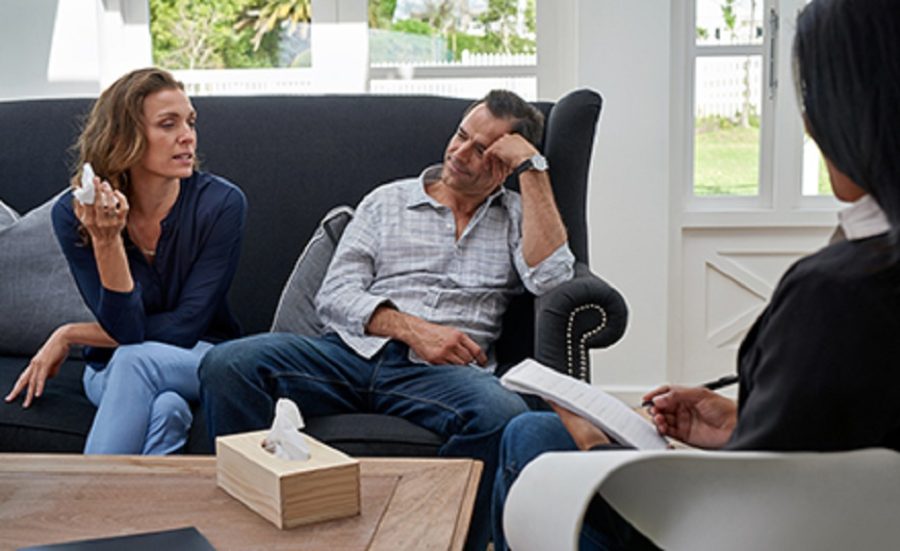Mercy College Hosts Workshop That Aims To Create Accountability
Mercy’s Office of Community Standards and Student Conduct held a workshop for restorative justice, seeking new ways to improve communication and build a positive community.
Leading the training was training consultant Taylan Stulting, who also works at the Kingsbridge Heights Community Center. KHCC has been a collaborative partner for restorative justice events and resources all year.
“Restorative justice is an approach to achieving justice that involves those who have a stake in specific offense or harm to collectively identify and address harms, needs, and obligations in order to heal and put things as right as possible.”
Restorative justice focuses on repairing harm and creating accountability for individuals and communities. The three focuses are harm and the root causes of the harm, accountability, and responsibility, and active engagement for all involved.
Instead of asking has a rule or law has been broken and what is the punishment, restorative justice asks if has harm been caused and how can we repair that harm and heal those affected.
There are many principles of restorative justice that allow everyone to understand that they have inherent dignity, worth, and power. People also realize that we all have both caused and experienced harm, as we exist in relationships and communities. Humans are deeply interconnected.
It also focuses on collaboration and shared power. Each of us holds ingrained wisdom, in addition to the ability to consent and have a choice. We all deserve a space to speak our truth.
“The heart is healed and not just the defense is taken care of,” Taylan Stulting explained as positives of restorative justice.
Human needs often overlap. They search for what they need when they were harmed but also when it was caused on their end. Usually, it’s accountability, to be seen, community, structural change, overcoming shame and healing.
A Minnesota Department of Education report on In-School Behavior Intervention Grants talked about a student in elementary school who threatened to burn down the school following recess and his anger sparked fear among his classmates.
The teacher requested a circle of understanding for the students, where the students expressed their feelings about how the threats had impacted them, many of them experiencing nightmares.
The students also reflect on how their own behavior had an effect on the student who made the threat and how they were responsible, to a degree.
At the conclusion of the circle, the boy agreed to make changes in his own behavior and so did his classmates.
The boy initially was going to be banned from the playground for the rest of the school year, but his classmates felt he deserved another chance. They believed that if everyone did what they agreed to in the Circle, there would be no more problems on the playground. They were right. The boy was given a second chance and he followed through on the conditions of the agreement.
This case study showed children creating a comprehensive plan. Stulting points out, “If children can do it, imagine adults with life experience trying this.”
There is no singular origin of restorative justice as we know it today. If you trace almost any culture back far enough, you are likely to find traces of restorative justice processes and principles. Many indigenous people still utilize peacekeeping circles and similar processes that have been passed down through the generations.
Modern adaptations come through the criminal justice system, schools, and communities.
The principles of restorative justice can be seen in many types of structures including:
- Circles
- Group conferencing
- Truth and reconciliation
- Processes
Taylan Stulting provides different types of circles like a celebration, support, reintegration, learning, and a few others. The first step in circles is meeting and getting acquainted. Next is the phase of building relationships and developing empathy. Then comes the exploration of the issues or topic. It ends with plans being made and affirming connection.
Often there is a desire to jump right into the issue at hand, but that can cause feelings of danger or threat.
The aim is to create as much safety as possible within the circle. Absolute safety is not possible, but the plan is for people to feel safe enough. If there seems to be complete safety, chances are there is something being avoided.
Our bodies will not allow us to go deep unless we create safety so those in circles have to intentionally engage in the first and second stages of circles.
All participants sit in a circle to facilitate dialogue. The Circle Keeper leads the group through a circle structure; this structure offers consistency and predictability which can be critical in creating a sense of safety for participants.
Circle Keepers is the person who initiates and leads space. Though they are an active part of the circle, they are not responsible for creating solutions.
The guidelines for all circles goes as the following:
- Only the person with the talking piece speaks
- Talking piece moves in one direction
- You can pass the talking piece without judgment
- Speak from the ‘I’ perspective, no one is an expert
Additional guidelines created by groups based on core values and creating a safe space.

Nate Singleton is a Senior pursuing a degree in Media Studies: Journalism at Mercy University. He serves as the President of the Big Apple City Chapter...








